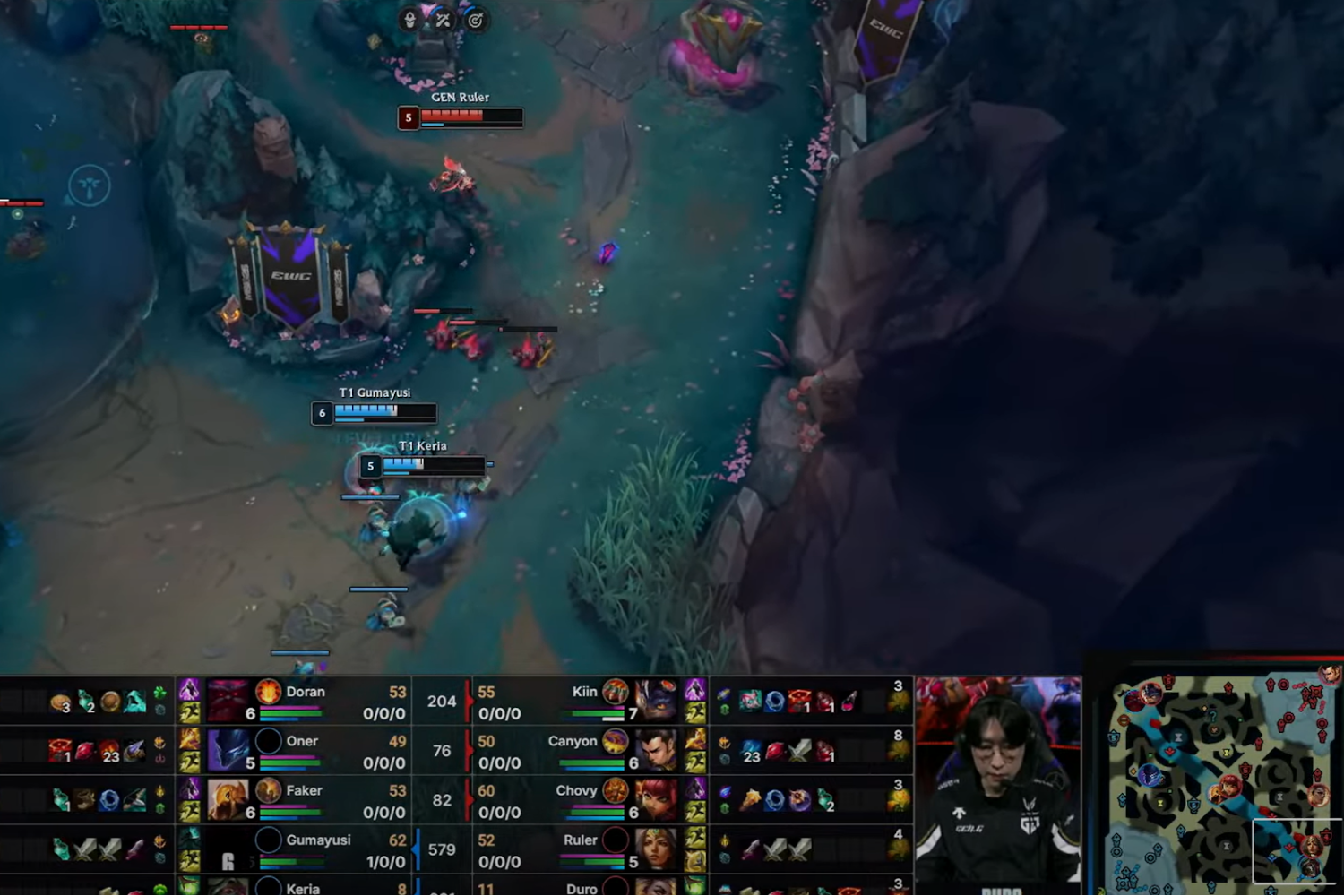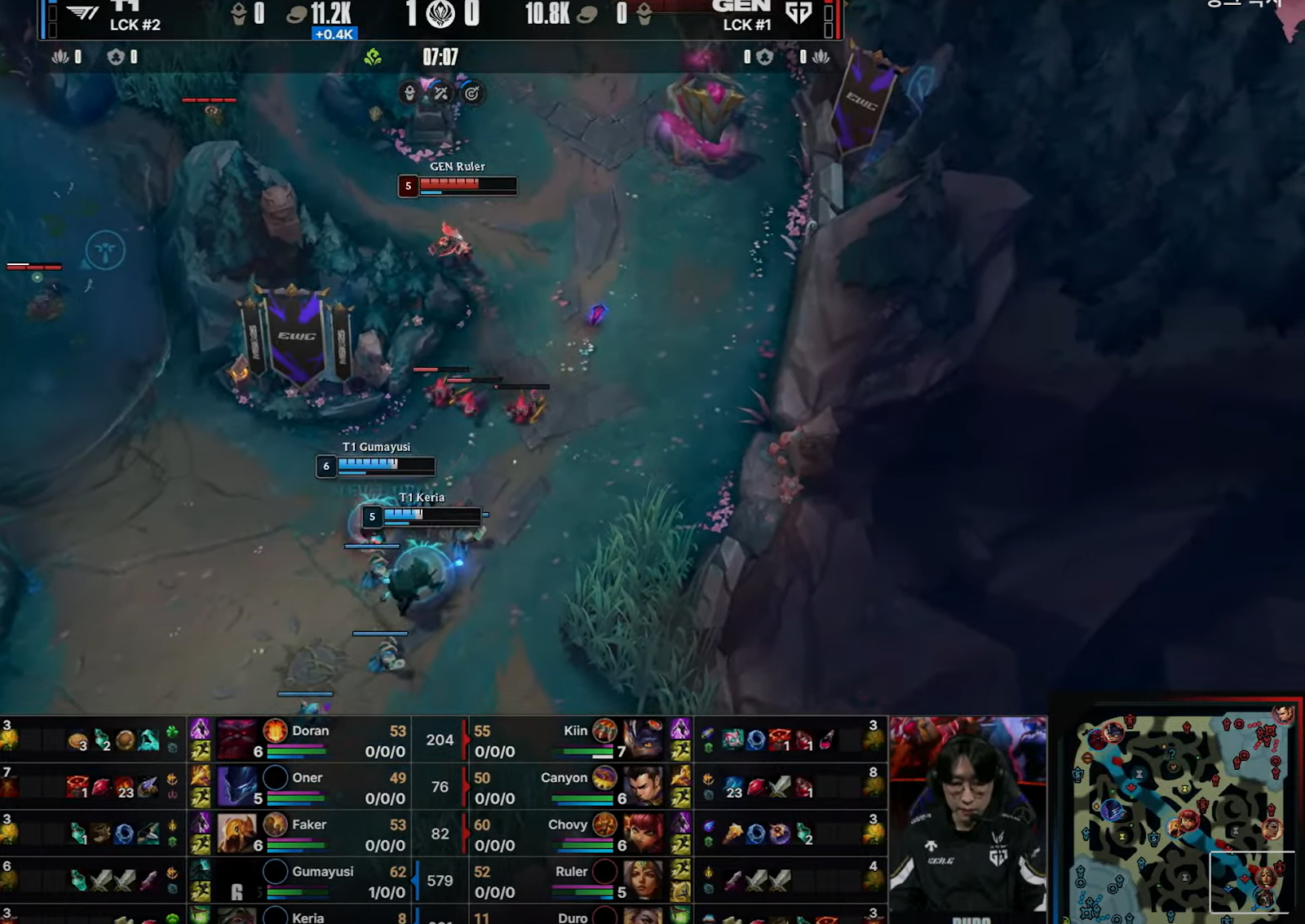Why Lane Swaps Still Exist in Pro Play in 2025: A Deep Dive Into Modern League of Legends Strategy


This guide was created by STATUP.GG, an AI-powered voice coach designed to help you play smarter and more confidently.
One of the key trends of professional League of Legends in 2024 was the rise of lane swaps. The impact on the game was so significant that a team’s strength was often judged by how deeply they understood lane swaps and how well they could incorporate them into their strategy.
In the swap meta, top laners were often pushed out of the game and unable to secure the steady growth they normally relied on. Both teams would often dive the stranded top laner on opposite sides of the map at similar timings, or rush their support to the top side for a quick defensive setup. This structure naturally encouraged new patterns such as level one mid interference and early pathing aggression from junglers.
To counter this, Riot introduced strong anti-swap measures starting in Patch 25.5, and many of the established strategies quickly disappeared.
Even so, lane swaps between top and bottom have continued to appear in recent international events such as MSI and EWC. If the patch was supposed to shut down the strategy, why are lane swaps still showing up?
This article breaks down how lane swap strategies have evolved and explores why they have re-emerged in professional play despite the patches designed to suppress them.
The reason lane swaps became popular in the 2024 professional season was not simply because teams were sending top and bottom to opposite lanes. The trend began with changes to objective structure and a shift in strategic thinking.
Teams that drafted strong bottom lane combinations gained access to a wide range of strategic options. With lane priority, they could force the opposing jungler’s pathing, and a support freed from lane often connected that advantage into mid pressure and early Voidgrub snowballing.
The bottom turret does not receive the Fortification effect. While mid and top remain fortified for the first five minutes and make it practically impossible to take plates, bottom can be attacked for plate gold from the very start, which gave it extremely high snowball potential. In practice, teams that placed a favorable matchup in bottom were consistently securing at least two plates worth of gold, about 125 gold per plate for a total of 250 or more, and this translated into more flexible jungle pathing and higher success rates in early dragon fights.
On the other hand, teams with losing matchups found it difficult to break this flow and had very limited ways to respond. Because of this, many teams chose to disrupt the lanes early and accept the disadvantage rather than allow the opponent to snowball, planning to create advantages on the opposite side instead..
In other words, teams accepted losing plates in bottom but chose lane swaps to take a more proactive approach. They could set up fights around the Voidgrub on top side, secure a portion of turret plates there, or build priority through jungle and mid instead.
Lane swaps are no longer the one-sided structure where a team accepts turret plate losses and takes advantages elsewhere. Riot repeatedly introduced patches to stop teams from abusing this structure as a repetitive swap strategy.
Even so, lane swaps still appear in current professional play. They are not the same as before, where the top laner was excluded from the game entirely, and the form of the swap has evolved.
Today’s lane swaps are no longer tools for gaining extreme advantages. They have become planned strategic options used for maintaining temporary priority, keeping turns, and securing objective advantages. In other words, the strategy of lane swapping itself has not disappeared, but its purpose and its method have changed.
In professional play, winning the lane does not simply mean being ahead in kills or CS. It means securing the earlier turn by managing the wave and creating a moment where you can move first.
Applying HP pressure to force the opponent to recall first, then pushing the remaining wave and recalling afterward is a representative example of securing the first turn. From this point, the following flow begins:
Because early accumulated minion damage cannot be ignored, it is difficult to pressure the opponent immediately even if you have a gold lead.
Within this structure, even the player who won the lane has a short period where their priority disappears. This 40-second gap becomes a window that can be used to plan a lane swap.
In this timing, where the turn would normally shift to the opponent, a team can maintain priority through a lane swap and continue a favorable flow.
If the top laner has Teleport, responding to the swap becomes easier, and if this timing overlaps with the appearance of major objectives, the synergy becomes even stronger.
In solo queue, this same timing often appears as the support’s roaming window.
This period allows for many strategic setups such as mid interference, river vision, or counter-jungling responses, and the higher the skill level, the more precisely this window is used.
Lane swapping can be seen as a professional-level solution that structurally makes use of this concept of a turn.
The second major reason for lane swaps is the strategy of optimizing the timing of the 8-minute Voidgrub and key level timings.
The Voidgrubs appear at 8 minutes, and this timing lines up with when the jungler hits level 6 after doing a full clear, taking Scuttle, and clearing two more camps, as well as with when the ADC reaches level 6.
This moment becomes the first major fight timing where a team can fight at maximum strength.
Especially if a team has bottom lane priority, and they use a lane swap at this timing to reach the Voidgrub area first and secure position before the opponent, they can take a significant lead in the fight.

An example of this appeared in the MSI 2025 finals between T1 and GEN.G.
In this way, lane swaps have developed beyond simple champion repositioning and have become strategic tools for planning turns and securing objective fight priority.
Found this helpful? Try STATUP.GG for real-time voice coaching in-game.
Questions or feedback? Email us anytime at contact@gamerrepublic.gg